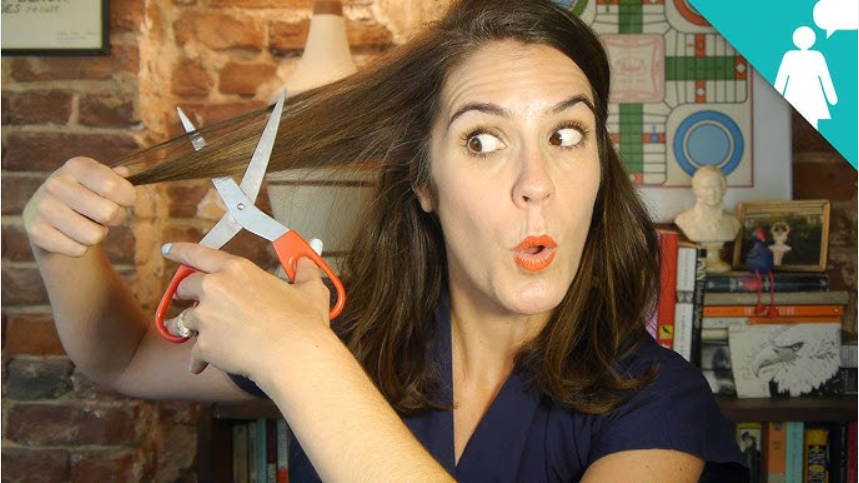
It’s fine if your winter phase feels more like a winter slump.

As the New Year kicks off, there’s often a lot of pressure to become the best version of yourself. On social media, content creators are sharing their “winter arcs,” a trend where people work on their wellness goals throughout the winter months to be ahead by the time 2025 rolls around. For some, the New Year brings a wave of motivation, making it the perfect time to focus on health and fitness. But what happens when that initial enthusiasm fades and is replaced by the exhaustion from a tough year?
For many, the end of 2024 was marked by stress from election anxiety and holiday grief. These emotions can weigh heavily, making it hard to feel motivated to exercise. Combine that with the seasonal affective disorder (SAD) many face during the colder months, and it’s easy to feel stuck. But the truth is, embracing a “winter slump” might not be as bad as it sounds.
Even though this time of year is often associated with self-improvement, there’s a strong case for slowing down and accepting where you are. Wellness is a journey, and your goals should change as your mental and physical health needs evolve. If you’re feeling overwhelmed, it’s completely fine to adjust your goals rather than force yourself to stick to a rigid plan.
What is the “Winter Slump”?
The “winter slump” is that drop in energy, mood, and motivation that many people feel during the colder months. It’s a real phenomenon, often linked to reduced sunlight, which affects our circadian rhythm and lowers serotonin levels, making us feel more tired, irritable, and down. In some cases, this can even develop into Seasonal Affective Disorder (SAD), a form of depression that requires professional care.
How to Set Goals During a Winter Slump
If you’re facing a winter slump, it’s still possible to set meaningful goals, but the key is to avoid adding more stress to your plate. Dr. Todd Dorfman suggests focusing on small, realistic goals that promote well-being. These could include improving your sleep, adding regular physical activity into your routine, or practicing mindfulness.
Instead of obsessing over the end result, try to focus on the process. For example, commit to exercising a few times a week or making healthier meals. This way, progress feels more achievable, and you won’t get discouraged by a lack of immediate results.
Dr. Dorfman also emphasizes the importance of consistency over perfection. Small, steady efforts are often more effective than dramatic, short-term changes. Stick to your routine, even if it’s in small doses, and you’ll likely see progress over time.
When to Reconsider Your Goals
Sometimes, it’s necessary to re-think your goals, especially if you’re struggling with a winter slump. Dr. Dorfman recommends adjusting your goals if they start to feel counterproductive or overly stressful. Reworking your goals isn’t a failure; it’s a sign that you’re adapting to your circumstances. Here are some signs it might be time to reassess:
- Your goals no longer align with your current priorities.
- The goals are causing more stress than motivation.
- You feel disconnected from the purpose behind them.
How to Navigate a Winter Slump
While it’s totally okay to step back from your wellness goals during a winter slump, it’s also helpful to take steps toward improving your mindset so you can get back on track when you’re ready. Dr. Dorfman shares several strategies for easing stress and nurturing a healthier mental space as you move forward:
- Rest and Recovery: Don’t feel guilty for needing rest. Dr. Dorfman stresses that rest is essential for long-term health, so take the time you need to recharge.
- Start Small: Even small bursts of physical activity, like a short walk or a quick yoga session, can boost your mood. The same goes for tackling daily tasks—setting one small goal each day, no matter how minor, can help you build momentum and confidence.
- Ground Yourself: If your slump is making you anxious, try grounding techniques like deep breathing, meditation, or journaling. These can help you stay present and focus on the positives in your life.
- Reach Out: Don’t hesitate to connect with others. Talking to friends, family, or a mental health professional can provide valuable emotional support.
- Prioritize Sleep: Dr. Dorfman emphasizes how crucial quality sleep is for overall well-being. Since SAD often disrupts the body’s circadian rhythm, focusing on a solid bedtime routine can help restore balance and improve your mood.
By taking these small, compassionate steps, you can work through your winter slump and set yourself up for a better headspace as the year progresses.





